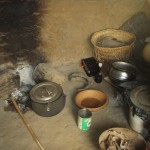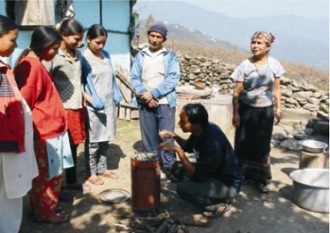University Corporation for Atmospheric Research (UCAR) Researchers tackle meningitis in Africa’s Sahel
A trip to Ghana last February brought UCAR/NCAR researchers from different disciplines together to reduce meningitis in Africa’s Sahel region.
 The UCAR Meningitis Weather Project was launched in 2009 by Raj Pandya (EO), Mary Hayden (RAL/ISP), Tom Yoksas (Unidata), and Tom Hopson (RAL), with a grant from Google.org and partnerships with Ghana’s Navrongo Health Research Centre and the University of Ghana’s School of Public Health. The goal is to provide long-term weather forecasts in the Sahel that will help reduce outbreaks of meningitis by enabling local health providers to target vaccination programs more effectively.
The UCAR Meningitis Weather Project was launched in 2009 by Raj Pandya (EO), Mary Hayden (RAL/ISP), Tom Yoksas (Unidata), and Tom Hopson (RAL), with a grant from Google.org and partnerships with Ghana’s Navrongo Health Research Centre and the University of Ghana’s School of Public Health. The goal is to provide long-term weather forecasts in the Sahel that will help reduce outbreaks of meningitis by enabling local health providers to target vaccination programs more effectively.
The project also interested in research showing that people exposed to large amounts of indoor pollution (from cooking over open flames) are up to nine times more likely to contract meningitis. Raj, Mary, and Tom Hopson were already headed to Ghana in February for a weeklong research trip, so Christine joined them for a quick look at how air quality and indoor cooking might connect to meningitis.
From a base at Navrongo, the team collaborated with Ghanaian researchers to study the disease’s local context, improve forecasts of annual rains with enough spatial resolution and lead time to optimize the allocation of vaccines, and carry out air quality research.
Christine brought an assortment of small, inexpensive instruments being developed at CU-Boulder for measuring air quality and airborne particles. She was able to make basic measurements of both background air quality and indoor air quality where cook stoves are used. It’s too early to make conclusions from the data, which is still being analyzed. But the team is currently working on a proposal to make a return trip to Ghana for a more thorough study that covers two dry seasons and also takes into account biomass burning in the area.
The team also brought along five cleaner-burning cook stoves developed by colleagues in CSU’s Department of Mechanical Engineering for locals to test out, to see if they could be a practical alternative to their current method of cooking over open flames inside their homes. Currently, women spend about six hours in the bush searching for wood for every three days’ worth of cooking.
Mary, who is trained as a medical anthropologist, recorded what people liked and didn’t like about the stoves and gauged their willingness to pay for them and whether any barriers to use exist. “People loved that the stoves would allow them to use far less fuel,” she says. “If we could reduce both fuel use and cooking time by half, that’s really a boon.”
The team’s proposed return trip to Navrongo would involve bringing 100–200 of the stoves and setting up a study to see if their use reduces indoor air pollution, negative health impacts, and incidents of meningitis.



